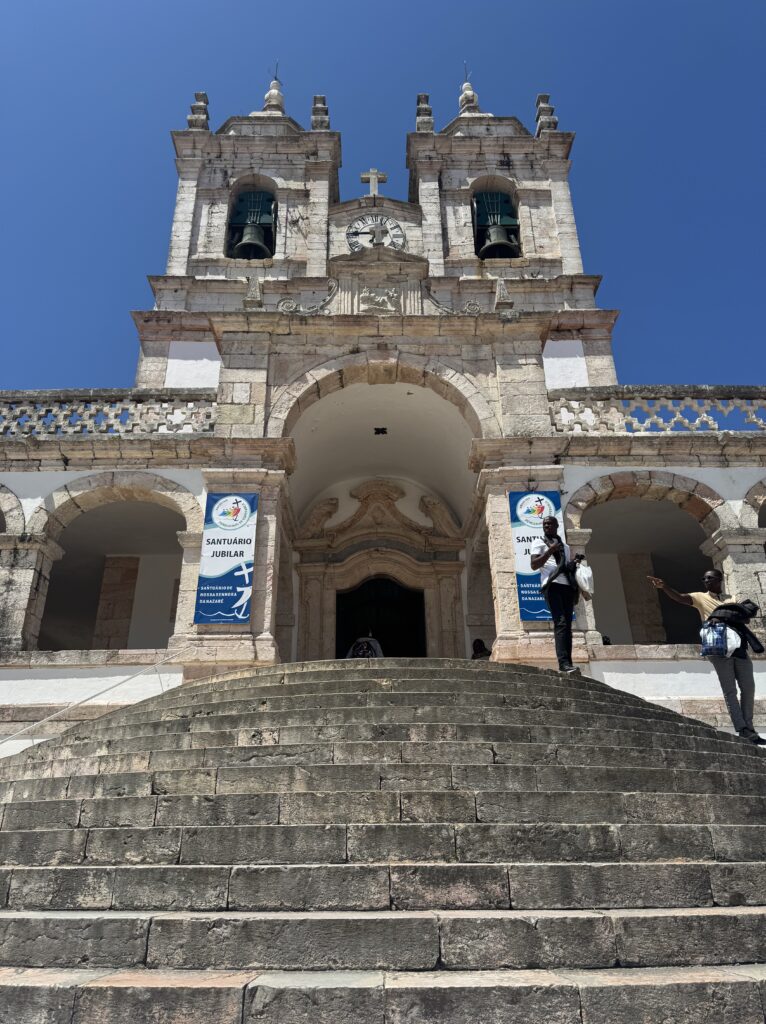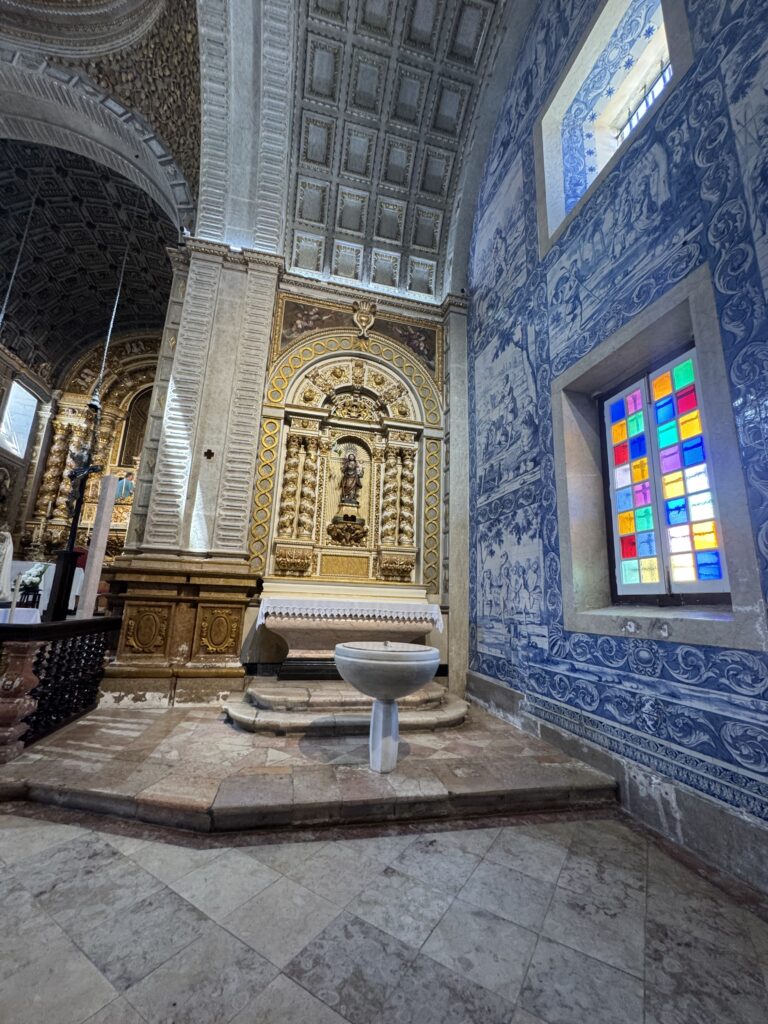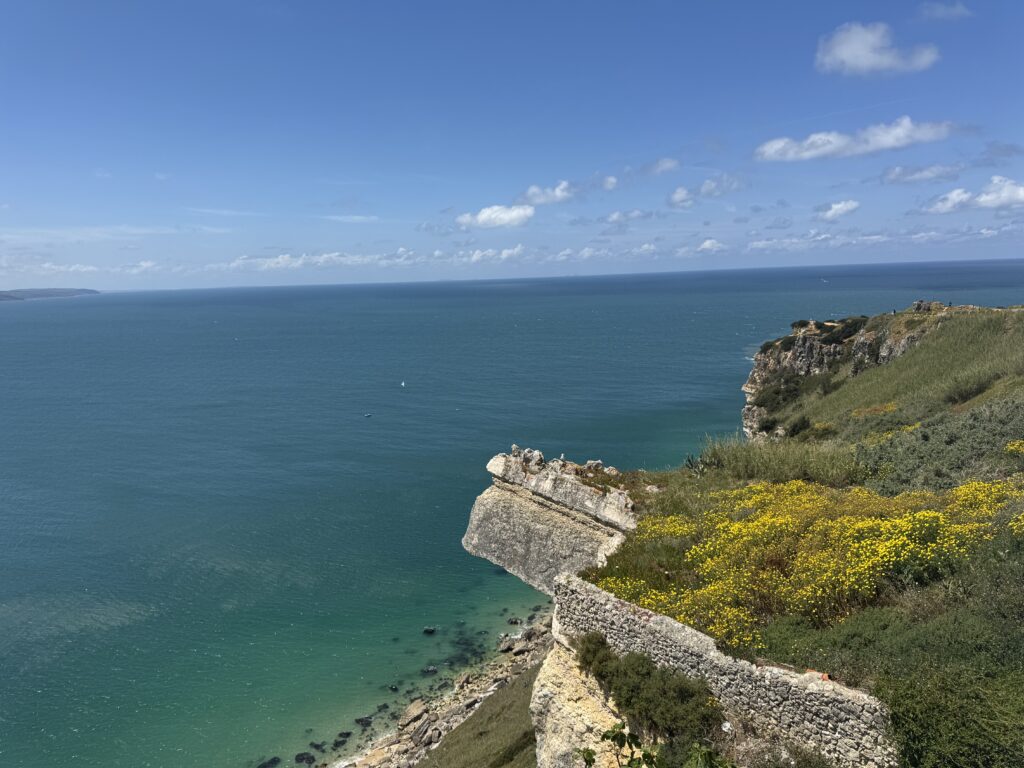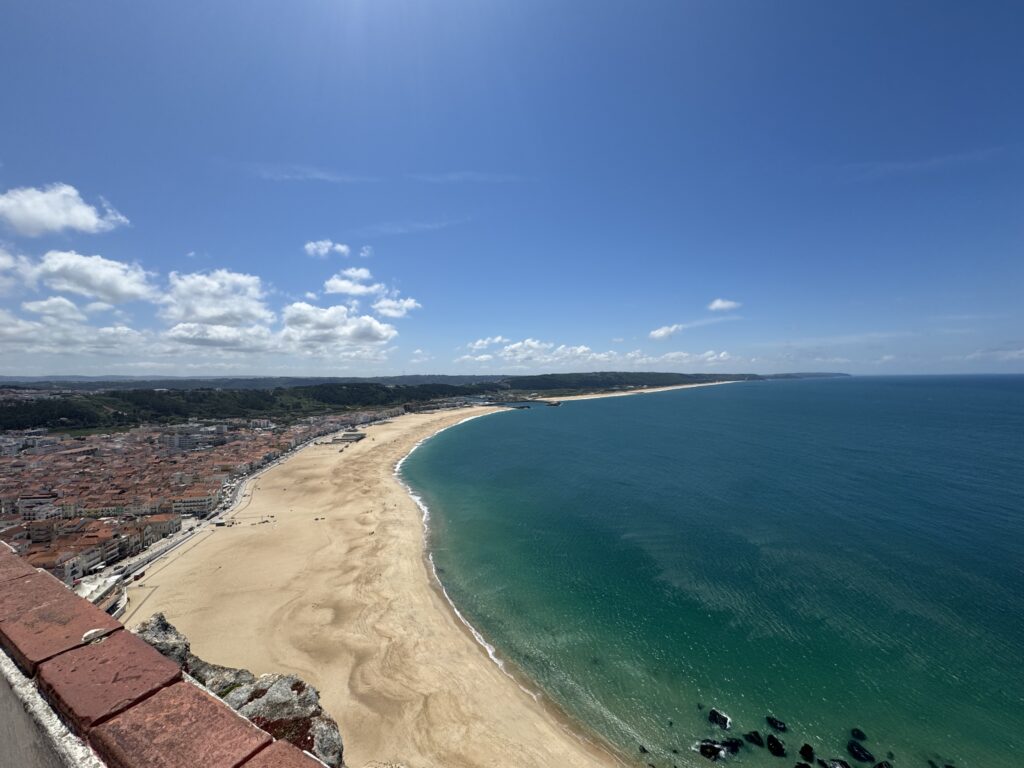I took a daytrip tour from Lisbon to get to Nazare as a part of three places we’d visit that day. The reason for inclusion for the tour was mos likely because Nazare is famous for the highest waves for surfing. Nazaré, a small fishing village on Portugal’s west coast, has gained worldwide fame for having some of the most powerful waves ever surfed. Average height of waves is 50-65’ high but one surfer hit record-breaking wave height of 101’ surfed by Rodrigo Koxa in November 2017, earning him the Guinness World Record for the largest wave ever surfed. (Citation : https://www.surf-escape.com/surfing-in-portugal/nazare/….) But as our tour bus pulled into Nazarre, the first thing we saw actually was the historic hospital, much to my amazement.

The Hospital, is attached to the Sanctuary of our Lady of Nazareth which is an astoundingly beautiful structure. The church was founded during the 14th century during the Pilgrammage of King Ferdinand. He ordered it built to accommodate the larger numbers of people who wanted to come to pray to Our Lady of Nazare. At that time the wooden porch but even later King Manuel 1 renovated the Sanctuary to have a new staircase built, which consisted of semicircular steps that go up to Baroque portal which sit majestically below two square bell towers. Then later the main chapel was worked on extensively and was completed in 1691. In 1708, much tilework was done to adorn the Church by a Dutch artist/ceramist Williem Van der Klöet. These tiles are just lovely and give a very welcoming feel to the entry. Interior to the nave, which is in a high-cross plan, in addition to the golden altarpiece there are corridors of the Sacristy were covered with blue and white tiles by the Portuguese master António de Oliveira Bernardes in 1714. This was especially beautiful and seemed intrinsically Porutugese. (citation https://en.wikipedia.org/…/Sanctuary_of_Our_Lady_of…) Under the decorative aspe, a statue of Nossa Senhora da Nazaré sits in a lit niche above the main altar, which has twisted columns to each side. All this is under a coffered ceiling.

As far as the Hospital itself goes, the project resulted from a conversion of a former Rector’s house into a Civil Hospital in 1877 and was designed by Francisco José de Sá.



From that date until 1975 the hospital continued to grow, becoming one of the area’s leading hospitals. In 1975, the hospital came to serve the Nation of Portugal and became an inpatient unit. From that time the hospital cannot serve civil hospital functions and now serves outpatient and consultative functions only. It currently has what they call an integrated continuing care unit, which has a rehabilitative and maintenance function to help with both acute and chronic conditions. Hospitalization can be accommodated within its doors from 30-90 days. It is amazing that this hospital has been serving its community for this long! (Citation: https://cnsn.pt/valencias/centro-hospitalar/)

The hospital was open to the public. The building is made of concrete and has plasterwork white-washed on the façade, and precast concrete ornamenting all the openings like doors, windows and the corners of the building. Like the Church, the Hospital has clay tile roofs.

Outdoor spaces commonly were encircled with similar precast concrete elements and had a statue within. The area surrounding the area is very walkable, with the area directly across from the Hospital and the Church is a very large square with a ferris wheel and a lot of small shops. The whole square also opens up to the surrounding landscape, with the whole pavement overlooking the whole of the City of Nazare and the ocean with it’s massive waves below. It is an extremely beautiful and well-connected place for a community to have built and sustained such lasting Hospital such as that of Our Lady of Nazareth.


